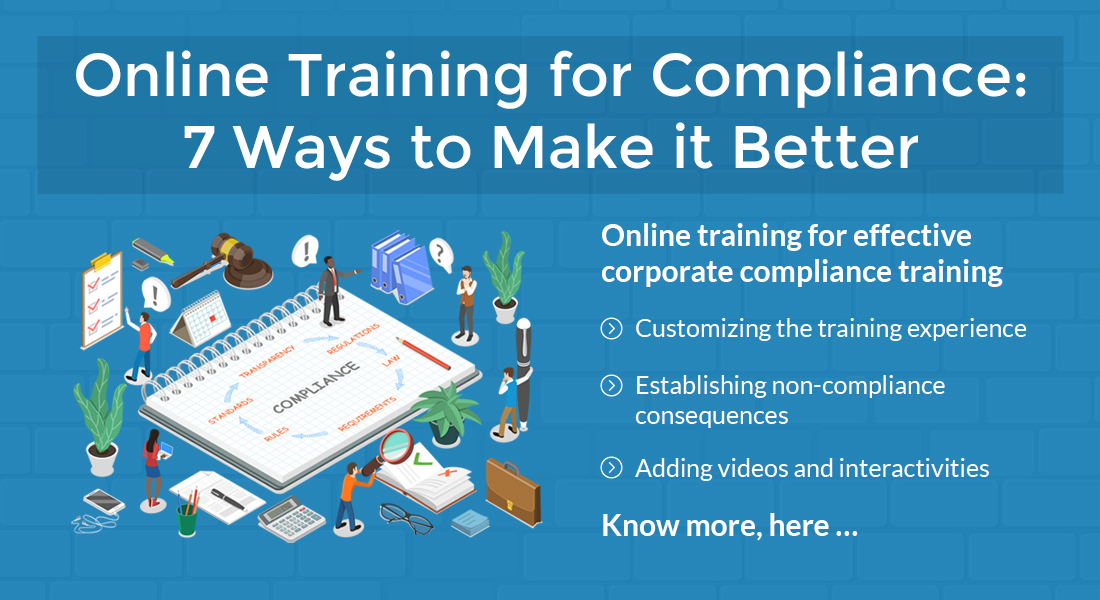Learning Strategies to Design Engaging Online Health & Safety Training – Part 2

In the previous blog, we discussed four learning strategies that make online health and safety training more engaging. You can turn the dry, boring click Next, page-turner course into a lively and effective safety training with the proper use of instructional design strategies. When your safety training is effective, workers will have a safer workplace with higher productivity and your organization grows without legal hassles.
So, let’s explore four more learning strategies and how they make online safety training more engaging.
5. Play Safe with Game-based Learning
Turning your online health and safety training into a game will elevate the fun factor in learning. It will help you break the monotony of safety compliance, which turns off learners. Game-based safety training will motivate your workers to actively participate in the learning activity rather than be mere passive spectators.
Game-based learning approach works best for safety training. This strategy engages uninterested learners and reduces accidents. This approach allows the learner to be involved in the course and succeeds in imparting a competitive spirit.
6. Provide Guided Learning
The guided learning strategy will help your employees go through the course, aided by a guide. You can use an online character as a facilitator, narrator, or an expert who provides health & safety tips whenever needed. Guided learning in safety training creates a virtual learning environment that enables learners to feel the presence of an online instructor.
Guided learning approach uses digital characters to introduce the causes or hazards and guides learners throughout the online safety training. The avatars, vector images or characters in guided learning approach help overcome the absence of a physical instructor in a virtual environment and engages learners. This approach also guides learners in learning precautionary measures. For example, an avatar of a manufacturing site supervisor guiding employees to take the necessary safety precautions at various places and showing best practices for safety.
7. Microlearning Assets
Microlearning, bite-sized learning, or chunked learning is another ideal learning strategy to extend training and performance support for employees on safety procedures. Microlearning is fully capable and effectively performs the task with short and intense snippets of safety information that are easily digestible by learners.
Microlearning assets for safety training can be given in a number of forms such as Dos & Don’ts infographics, bite-sized videos, flash cards, short interactive quizzes, board games, and more. You can access all these micro assets on mobile devices.
Infographics represent dos and don’ts of safety in a precise, clear and visually appealing manner. For example, showing permitted and restricted actions at the time of a fire accident or short circuit.
Bite-sized videos are helpful to show how to use safety equipment like fire extinguishers. Demonstrations with background audio narration can be used to explain various safety techniques.
Short quizzes with gaming themes such as Trivia, Hangman, and more are effective in testing learners’ knowledge informally and emphasize the importance of adhering to safety procedures.
8. Simulations: Practical Safety Training in Risk-free Environment
Simulations replicate real work life situations in a virtual environment, where learners can practice the task without serious consequences. They are very useful in teaching concepts such as ‘what, why, and how’.
For example, you teach different topics such as ergonomics, workplace safety, driving safely, pilot training, operating heavy machinery, and more. So, you can adopt the ‘what, why, and how’ approach for each topic. For instance, to teach ergonomics at the workplace; you can provide information on ‘what is ergonomics’, ‘why is it important’, and then ‘how to avoid such situations’.
Similarly, the popular ‘Watch, Try, Do’ approach in simulations is used in online workplace safety training. Starting the safety training with ice-breaker questions, and adding the humor element to bring up the fun factor will be an added advantage to the discussed eight learning strategies. Hope you leverage these approaches to develop highly effective online health and safety training.



![10 Commandments for Learner Motivation and Engagement (Part 1) [Infographic]](https://blog.commlabindia.com/hubfs/Imported_Blog_Media/online-training-motivate-learners-ideas-info.jpg)

